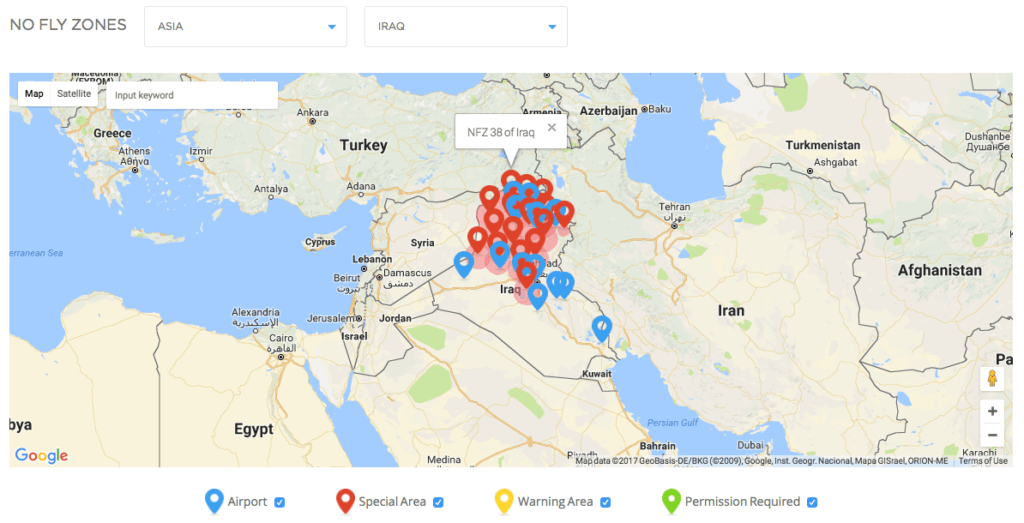DJI has added numerous parts of Iraq and Syria to its list of No-Fly Zones. Several incidents involving explosives strapped onto consumer drones have been reported in the region. And concerns are growing over the ease with which terrorist groups such as Isis can use them for violent purposes.
DJI’s latest steps are significant and not unexpected. The world’s most popular drone manufacturer has already started to add prisons and large sporting events – two areas where there have been concerns over drone activity – to its list of no-fly zones.
DJI’S GEO system categorises different areas depending on the sensitivity of the airspace. Some areas are restricted, but simply require the pilot to bypass the block once a warning has been read. Others require authorization through an official DJI account. Others cannot be bypassed for “sensitive national-security locations“, such as military bases.
We can only assume that the no-fly zones now being implemented in Iraq and Syria are in the latter category.
Read more: Does DJI Geofencing Update Go Far Enough?

When you hear of drone strikes in the middle east, it’s usually a one-way street. But with the rise of sophisticated, readily available drones, Isis has reportedly been modifying consumer models to create deadly weapons.
Ars Technica and Popular Science are just two publications that have gone into detail about these activities.
Another pic of the weaponised IS drone that was flying over us outside Al-Buseif this morning and was brought down by #Iraq forces pic.twitter.com/n5mW6DpJJn
— Sara Hussein (@sarahussein) February 23, 2017
Despite the no-fly zone DJI now has in place, it’s not considered that difficult to bypass it and fly anyway. We’re not going to tell you how to do that here, but a quick search on Google will give you a better idea. In a statement to Gizmodo, DJI said:
DJI makes products purely for peaceful purposes, which is how the overwhelming majority of pilots use them, and we deplore any use of our drones to bring harm to anyone. Our geofencing system is designed to advise pilots of airspace restrictions, and was never intended to enforce laws or thwart people who want to misuse our products. Certain areas vital for aviation safety or national security are marked as restricted in our geofencing system, and we are constantly adjusting those areas to account for temporary conditions that create special restrictions, such as wildfires and major public events.
One further complication: The Iraqi army, currently working with coalition forces, is also using drones as part of the war effort. It remains to be seen how these, which are largely being used for reconnaissance, will be impacted by DJI’s new no-fly zones.
Malek Murison is a freelance writer and editor with a passion for tech trends and innovation. He handles product reviews, major releases and keeps an eye on the enthusiast market for DroneLife.
Email Malek
Twitter:@malekmurison
Subscribe to DroneLife here.